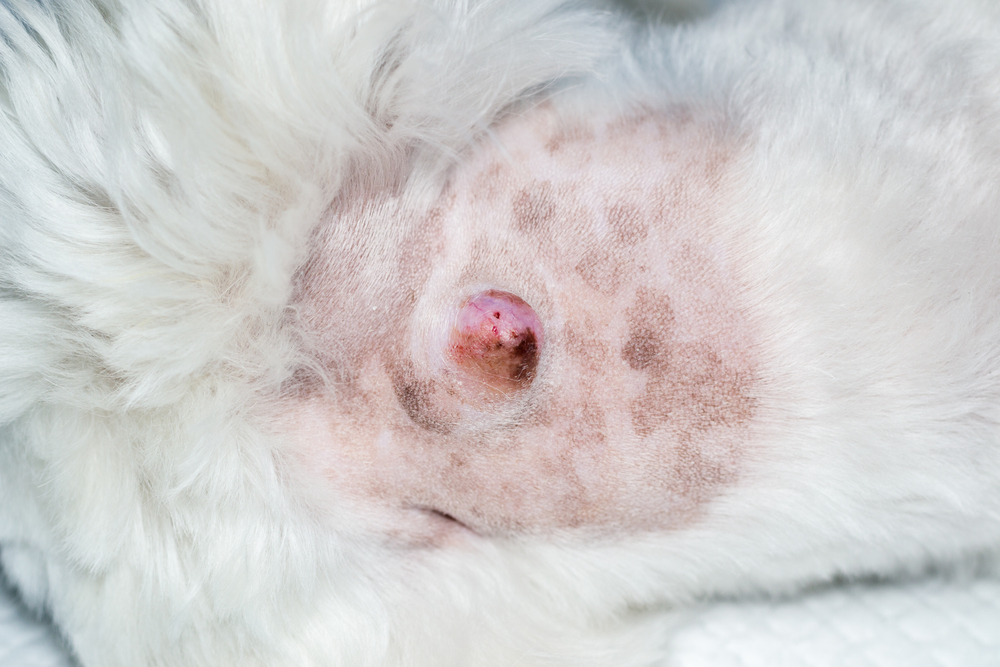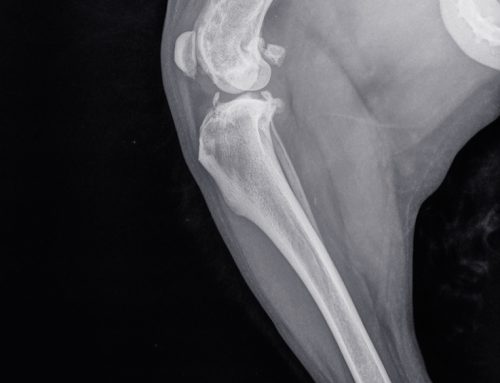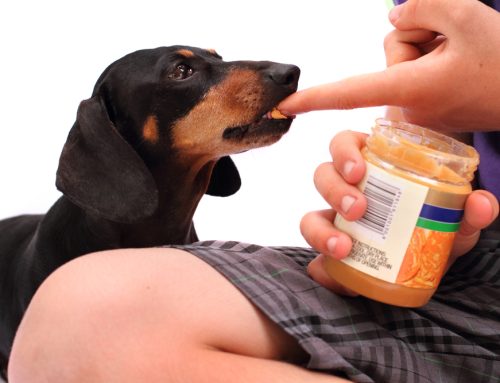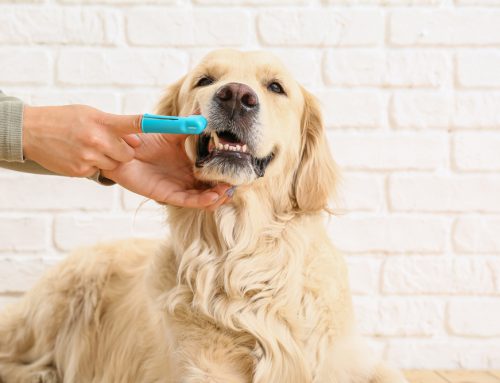You are stroking your pet’s silky fur while relaxing on the couch, when your hand stumbles across a small, firm lump. Instantly, your mind goes to “the big C”—cancer. While some lumps and bumps can indicate a cancerous tumor, not all masses are malignant. In fact, many lumps are benign and, although they may grow, are not likely to cause terminal illness. Before panicking about your furry pal’s lump, schedule an appointment with your Scripps Ranch Veterinary Hospital veterinarian for an accurate diagnosis. There’s an excellent chance your cherished companion’s bump is one of the following five most common benign masses.
#1: Sebaceous cyst
A sebaceous cyst is essentially a large pimple on your pet’s skin. These superficial bumps are clogged oil glands in the skin that are harmless to your pet, although they can become inflamed and sore if they rupture. Typically, a sebaceous cyst is a small, raised bump, which can burst, and ooze a pasty or cottage-cheese-like substance. Sebaceous cysts generally don’t require surgical removal, unless they keep clogging and rupturing, irritating you or your pet. Otherwise, medicated shampoo can help reduce their frequency and severity.
#2: Lipoma
Lipomas are one of the most common benign masses in dogs, and can affect any breed, although overweight or obese dogs, and older pets, are more likely to develop lipomas. These soft, rounded, fat-filled masses are typically found close under the skin, and are seldom painful. Some lipomas can develop under the muscles and feel firmer than subcutaneous lipomas, and may interfere with movement if they are poorly placed, such as around limbs. Most lipomas tend to be slow-growing, but, if they begin to grow quickly after a period of inactivity, surgical removal may be advised.
#3: Histiocytoma
Histiocytomas commonly affect pets under a few years of age, appearing as small, firm, button- or dome-like bumps on the skin surface, typically popping up on a pet’s legs, head, and ear edges. These benign masses originate from the immune cells that provide protective immunity to the tissues in contact with the outer environment, and most regress in three months. However, if a histiocytoma does not resolve on its own, surgical removal will take care of this small mass.
#4: Skin tag
Older pets can develop skin tags, which are harmless growths that often pop up from the skin’s surface on a stalk. Like people, pets can have a single skin tag, or clusters on their chest, legs, face, back, armpits, or other areas. Skin tags can develop in any breed, although large-breed dogs appear to develop these small growths more commonly. Since these bumps are benign, surgical removal is rarely necessary, unless the pet begins to chew or scratch them.
#5: Adenoma
Although adenomas are a common type of skin wart similar to papillomas, they do not develop because of viral causes, nor are they highly contagious. These sebaceous gland tumors frequently appear on the head, eyelids, and limbs, and generally do no harm. Most of these cauliflower-shaped protrusions remain small, and do not interfere with your pet’s life, although some will develop in places, such as the eyelids or between the toes, and require removal.
Warning cancer signs in pets
While most bumps won’t harm your pet, some indicate a more serious issue, such as a neoplastic process. If your furry pal develops a lump, in addition to any of the following cancer warning signs, schedule an appointment with our team:

- Abdominal swelling
- Bleeding from the mouth, nose, or other body openings
- Difficulty breathing
- Difficulty eating
- Discolored skin
- Non-healing wounds
- Persistent diarrhea or vomiting
- Sudden weight changes
- Unexplained swelling, heat, pain, or lameness
If your pet’s mass changes in size, shape, or appearance, or begins to ooze or ulcerate, our veterinarian should reevaluate the lump, to ensure it has not become a more serious issue.
Has an unusual bump popped up on your furry pal? Before working yourself into a frenzy, contact Scripps Ranch Veterinary Hospital for an appointment, to determine the true cause of your pet’s lump.





Leave A Comment